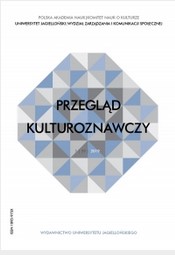Odwrócone zoopolis. Zwierzęta towarzyszące w getcie warszawskim
Inverted Zoopolis. Companion Animals in the Warsaw Ghetto
Author(s): Karolina Wróbel-BardzikSubject(s): Local History / Microhistory, WW II and following years (1940 - 1949)
Published by: Wydawnictwo Uniwersytetu Jagiellońskiego
Keywords: Warsaw Ghetto; World War II; dogs; animal studies; human-animal relation; interspecies theory of the city; companion animals; everyday life; limit experiences;
Summary/Abstract: The article, which uses inter-species theories of the city, is an attempt at studying presence of animals in the Warsaw ghetto during the Second World War, a space which redefined not only the human condition, but also conditions of animals. In the situation where animal companionship is radically limited under ghetto conditions, where the status of prewar ordinary life becomes problematic, a conceptualization of this radical shift becomes necessary. The article is an analysis of the relation between people and companion animals, mainly dogs, which have been shown in the context of ordinary and seemingly insignificant matters, such as walking through the streets of a closed district, but also such events as hiding in bunkers or the Warsaw Ghetto Uprising. The issue of the relationship between people and animals in the space of isolation is an important category through the prism of which we can look at the dynamics of change and degradation of the existing cultural norms towards animals. This approach made it possible to see the relationship between animals and the Holocaust and to better understand the everyday life of the Warsaw Ghetto in the face of limit experiences. Paying attention to animals, which haven’t until now been given a place in traditional historical narratives, allows asking new questions and noticing new problems.
Journal: Przegląd Kulturoznawczy
- Issue Year: 42/2019
- Issue No: 4
- Page Range: 450-465
- Page Count: 16
- Language: Polish

